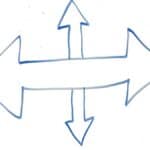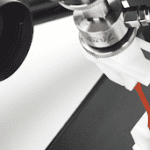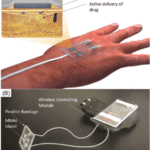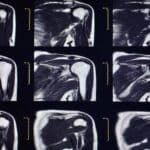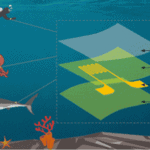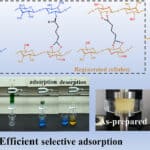The dura mater is a remarkably durable membrane that safeguards the central nervous system, providing indispensable protection. It harbors distinctive mechanical properties that are crucial for safeguarding the brain within the confines of the skull. These properties are not uniformly distributed; rather, they vary in a directional manner, allowing the dura mater to offer tailored resistance against different types of mechanical stresses using the BioTester. Understanding this alignment and variation of mechanical properties helps to elucidate how the dura mater effectively absorbs and distributes forces, thus maintaining the delicate equilibrium necessary for brain protection.
The intricacies of the dura mater’s relationship with the brain and skull underscore its significance in biomechanics and clinical research. By examining the mechanical properties of the dura mater, such as its tensile strength and elastic modulus, researchers can gain insight into how this membrane contributes to the overall biomechanical integrity of the central nervous system. These insights not only advance the fundamental knowledge of human anatomy but also propel the development of better protective gear and inform surgical procedures that aim to minimize damage to the brain.
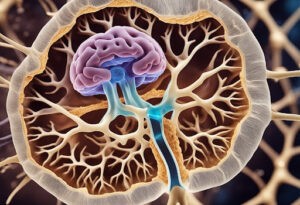
Key Takeaways
- The dura mater adapts to varying mechanical stresses, safeguarding the brain from injury.
- Mechanical characteristics of the dura mater are crucial for the biomechanical protection of the CNS.
- Understanding the dura mater’s functions informs clinical practices and enhances neuroprotective strategies.
Anatomy of Dura Mater and its Relationship with the Brain and Skull
Understanding the dura mater—a tough, protective membrane—is crucial as it plays an integral part in safeguarding your central nervous system. Its interactions with the brain and skull are vital for mechanical stability.
“https://www.youtube.com/embed/4dpJqGkoK9s Dura mater – Function, Location & Layers – Neuroanatomy | Kenhub
Structural Hierarchy and Composition of Dura Mater
Your dura mater consists of two distinct layers: the periosteal layer, which is attached to the inner surface of your skull, and the meningeal layer, which lies closer to your brain. These layers are mainly composed of collagen fibers arranged in a dense, structured matrix that provides tensile strength and durability. Additionally, the dura mater is part of the meninges, the protective coverings of the central nervous system.
Role of Dura Mater in Central Nervous System
Functionally, the dura mater is one of the last lines of defense for your central nervous system. It operates as a shield against mechanical impacts, maintaining the integrity of the brain within the confines of the rigid skull. This membrane also creates compartments within the skull to support and protect different parts of your brain from potentially harmful movements or forces.
Interactions Between Dura Mater, Skull, and Brain Tissues
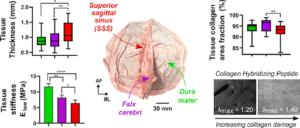
The relationship between your dura mater, skull, and brain is intricate and supportive. The collagen-rich structure of the dura mater allows for a formidable attachment to the skull, which in turn offers a stable boundary for the brain tissue. These interactions enable the dura mater to effectively absorb and distribute mechanical forces, diminishing the risk of damage to delicate brain tissues.
Biotester and the Function of Dura Mater
The dura mater acts as the brain’s sturdy shield, with properties designed to safeguard delicate neural tissues. Exploring its structure and function is crucial in understanding its resilience to mechanical stresses. The Cellscale Biotester is ideal for testing such materials.
Anisotropic Mechanical Stress Properties of Human Cranial Dura Mater
Your cranial dura mater exhibits anisotropic mechanical properties, meaning its strength and elasticity vary depending on the direction of stress. The tissue demonstrates differing elastic modulus values, an indication of its ability to resist deformation in response to force. Studies involving mechanical testing reveal these directional differences are critical in distributing and mitigating the force of impacts, thereby aiding in the prevention of traumatic brain injury
Dura Mater in Response to Mechanical Stresses and Trauma
When subjected to mechanical stress, the dura mater responds by stretching to a certain maximum strain before incurring damage. This response is integral to its role in protecting the brain from trauma. The dura mater’s resilience allows it to absorb and redistribute force, lessening potential damage to the brain during incidents such as falls or collisions.
Aging and Variations in Dural Mechanical Properties
As you age, the dura mater undergoes changes in its mechanical properties. The tissue may become less elastic and exhibit a lower threshold for strain. These age-related variations can impact how the dura mater provides protection for the brain, potentially making it more susceptible to injury from forces that would have been inconsequential at a younger age. Research is ongoing to further understand the implications of these property changes with age.
Clinical and Research Significance of Dura Mater

Understanding the dura mater is crucial as it plays a vital role in brain protection and informs medical approaches. Its unique properties require careful study to benefit both clinical and research applications.
Anatomy’s Implications for Medical Procedures
The dura mater is a robust membrane that envelops the brain and spinal cord, providing a critical layer of protection against traumatic impacts. For surgical procedures, especially angioplasty, your precise knowledge of the dura mater’s anatomy is essential to avoid complications. When you are performing these procedures, the directional stiffness of the dura mater influences the techniques you may choose to use.
Modeling and Simulation in the Development of Head Protocols
The dura mater’s influence on the development of head protocols is significant. Using finite element analyses, you can simulate surgical procedures and the effects of traumatic events on the human head. Moreover, advancements in the creation of surgical training phantoms benefit immensely from dura mater research, enabling you to develop more refined practices that lead to improvements in patient outcomes.
Interested in the secrets of Spinal Health discovered through advanced Biomechanical research, read about it HERE.

